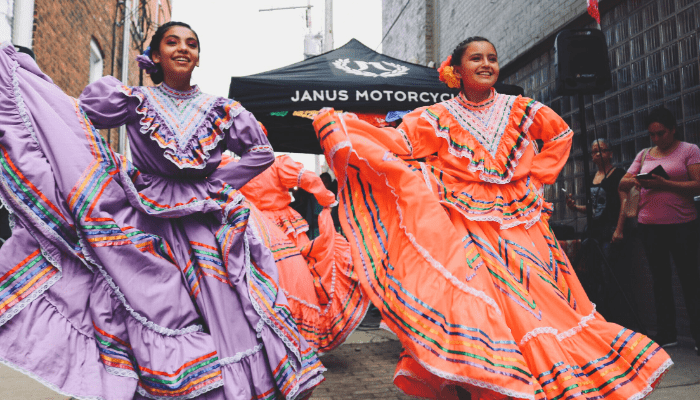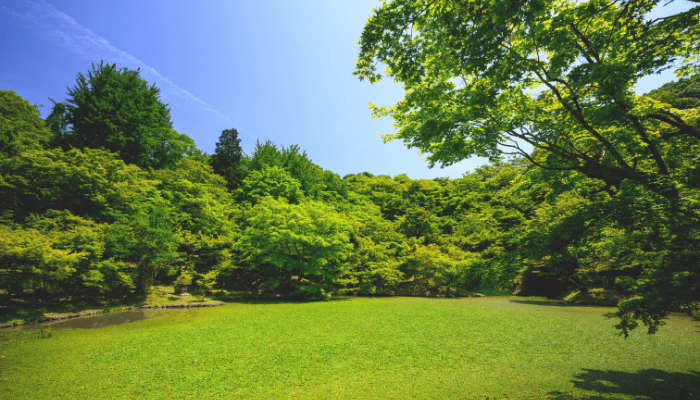Key Takeaways
Spanish‑style pools are more than functional. They weave history, culture, and Mediterranean design into a space that feels timeless and welcoming.
Key elements include hand‑painted mosaic tiles, soft organic shapes, stucco or stone finishes, shaded lounge areas, and landscaping with olive trees, bougainvillea, or lavender.
Water features are central: spouts, fountains, or spillways add movement, sound, and cooling effects while reinforcing the traditional aesthetic.
Popular styles range from intricate Andalusian courtyard pools to rustic hacienda retreats, modern Spanish revival designs, and resort‑inspired layouts.
Bringing this look home means using authentic materials, creating a courtyard atmosphere, and integrating warm, Mediterranean‑inspired surroundings.
Spain itself offers incredible examples, from the historic pools of the Alhambra to contemporary villas and resorts in Marbella and Mallorca.
For a sustainable twist, natural pools can incorporate Spanish design elements combining eco‑friendly filtration with terracotta edges and lush Mediterranean landscaping.
Ultimately, a Spanish pool is more than a swimming spot. It’s a statement of artistry, heritage, and outdoor living at its most beautiful.
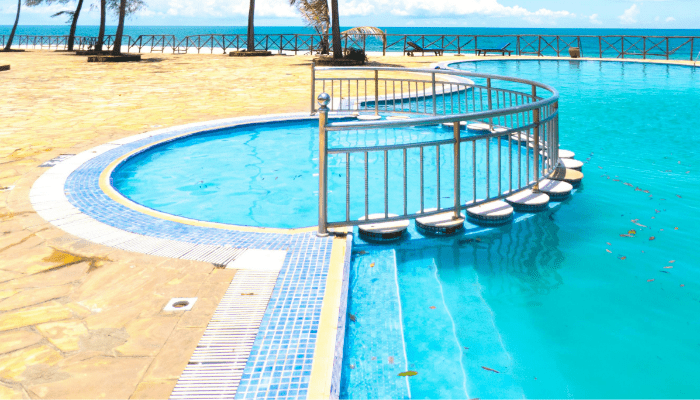
Some pools are purely functional. Others make a statement. Spanish pools? They tell a story.
They whisper of warm Mediterranean evenings, sun-drenched courtyards, and cool water framed by terracotta tiles. They reflect centuries of influence, from Moorish designs with intricate mosaic tiles to Andalusian haciendas where water features double as art. These pools aren’t just for swimming. They’re living pieces of history, blending nature, architecture, and craftsmanship.
And here’s the thing: they never go out of style. Whether set in a historic villa in Seville, a luxury resort in Marbella, or a private home in California embracing Spanish revival, these pools exude charm, sophistication, and a sense of place.
So, what exactly makes a Spanish pool unique? How can you design one? And where can you experience the most breathtaking examples in Spain? Let’s dive in. But by the end, you may be tempted to jump into the real thing.
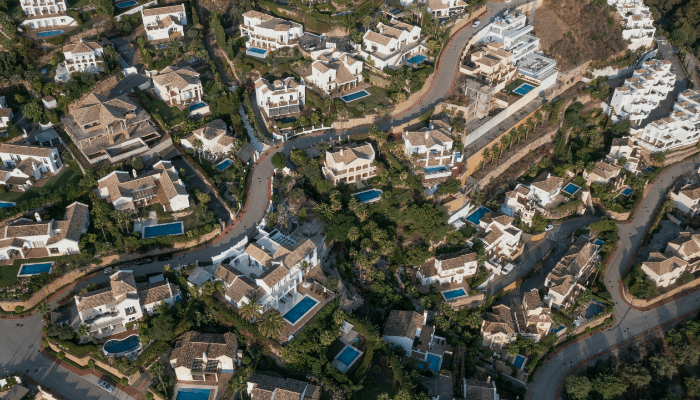
What Defines a Spanish Pool?
Not all pools are built for pure functionality. Some pools transport you to another place, another era, another way of life. Spanish pools do exactly that.
A Spanish-style pool blends Mediterranean aesthetics, Moorish influences, and warm, earthy materials. Think terracotta tiles, hand-painted mosaics, and soft, curved edges. These pools aren’t just places to swim, they are an extension of their surroundings, designed to feel organic, timeless, and deeply connected to nature.
Beyond their beauty, Spanish pools also serve a practical purpose. In the hot, dry climates of Spain, water has always been an essential element in architecture, not just for cooling off but for creating a serene, inviting atmosphere. From private courtyards in Seville to grand hacienda-style estates, these pools bring water into the design in a way that feels intentional, elegant, and luxurious.
Now, let’s break down what makes them truly unique.
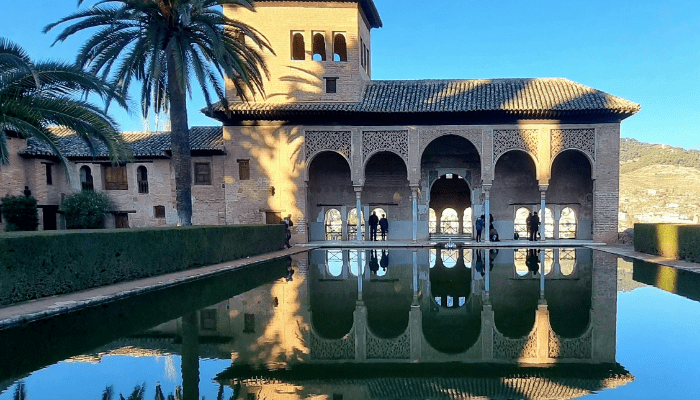
6 Key Features of Spanish-Style Pools
1. Decorative Tile Work
If there’s one thing that defines a Spanish pool, it’s tile artistry. Traditional Spanish and Moorish pools are often adorned with hand-painted ceramic tiles, geometric mosaic inlays, and bold Mediterranean colors like deep blues, emerald greens, and sun-baked terracottas.
2. Soft, Organic Shapes
Forget harsh, geometric lines. Spanish pools embrace curves, arches, and fluidity. Even rectangular pools often have rounded corners, built-in seating nooks, or raised spa sections with soft, sculpted edges.
3. Stucco & Stone Finishes
The materials matter. Spanish pools are typically framed with textured stucco, natural stone, or aged brick. All elements that reflect heat and blend effortlessly into their surroundings.
4. Water Features with Character
In many Spanish pools, the sound of trickling water is just as important as the look of the pool itself. Fountains, spouts, or cascading spillways aren’t just decorative, they create a peaceful, cooling effect.
5. Shaded Lounging Areas
Spain gets hot. Really hot. Which is why Spanish-style pools always incorporate shade in the form of pergolas, vine-covered trellises, or arched colonnades. They aren’t just beautiful; they make the space usable all day long.
6. Mediterranean Landscaping
A Spanish pool isn’t complete without lush, Mediterranean-inspired greenery. Expect to see cypress trees, olive trees, fragrant lavender, potted citrus, and creeping bougainvillea adding depth and natural beauty to the design.
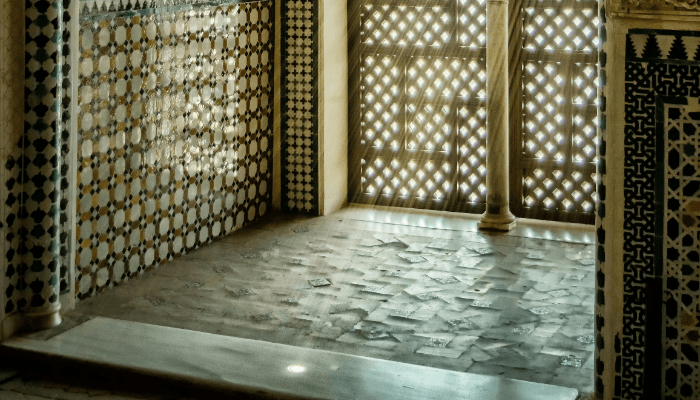
4 Spanish Pool Design Styles
Not all Spanish-style pools look the same. Here are some of the most popular variations:
1. Traditional Andalusian
Richly inspired by Moorish design, these pools feature intricate tilework, small fountains, and central courtyard placement, a nod to the water features found in the Alhambra in Granada.
2. Mediterranean Resort-Style
These pools embrace large, open layouts with infinity edges, terraced patios, and lush greenery. They are built for relaxation, often featuring built-in sun shelves and lounge seating.
3. Rustic Spanish Hacienda
Earthy, warm, and understated, hacienda-style pools feature red clay tiles, natural stone borders, and a connection to the surrounding landscape. Often set against rolling hills or vineyard backdrops, these pools feel timeless and effortlessly elegant.
4. Modern Spanish Revival
A blend of classic Spanish aesthetics with contemporary elements, this style incorporates clean lines, subtle tile patterns, and minimalist water features while still keeping that unmistakable Mediterranean feel.
How to Bring Spanish Pool Design into Your Own Backyard
A Spanish-style pool doesn’t have to be in Spain. You can incorporate these elements into your own home, no matter where you live.
Use Authentic Materials
Choose natural stone, aged terracotta, or hand-painted ceramic tiles to give your pool an organic, Mediterranean touch.
Add a Water Feature
A small wall fountain, decorative spout, or tiled spillway instantly adds a Spanish-inspired charm to any pool.
Create a Courtyard-Like Atmosphere
Spanish pools are often framed by enclosed spaces, archways, and shaded patios. Consider adding a stucco wall, vine-covered pergola, or a small garden nook to create that cozy feel.
Think About the Surroundings
A Spanish pool is never just about the pool itself. It’s about the whole environment. Incorporate warm-toned decking, natural stone walkways, and Mediterranean plants to make everything feel cohesive.

Where to Experience the Best Spanish Pools
Spain is home to some of the world’s most breathtaking pools. If you want to experience them in person, here are a few must-visit locations.
- The Alhambra, Granada – A historical masterpiece of Moorish water architecture.
- Hotel Marbella Club, Marbella – A luxurious Mediterranean resort with Spanish-inspired pools.
- Private Villas in Mallorca – Many of these traditional homes feature stunning tiled pools with ocean views.
- Historic Public Baths in Seville & Córdoba – Some of these date back centuries, blending history with relaxation.
Spanish Pools & the Natural Beauty of Oásis Biosistema
While traditional Spanish pools are known for their decorative elegance, there’s another way to embrace Mediterranean water culture: natural pools.
At Oásis Biosistema, we create chemical-free, eco-friendly pools that blend into the environment—a concept that fits seamlessly with Spanish design principles.
How Do Natural Pools Compare?
- Both emphasize nature: Spanish pools use natural materials and Mediterranean landscaping, while natural pools use biological filtration and aquatic plants.
- Aesthetic harmony: A natural pool can be designed with terracotta borders, Moorish tiles, and cascading water features for a Spanish-inspired look.
- Sustainability: Traditional Spanish pools require regular maintenance and chemical treatments, whereas a natural pool cleans itself through biological filtration, much like the ancient water systems of Spain.
For those who love Spanish pool design but want a more eco-conscious option, a natural pool inspired by Mediterranean aesthetics is the perfect choice. Imagine a pool surrounded by olive trees, with crystal-clear, chlorine-free water and terracotta tile edges, a true fusion of tradition and sustainability.

Conclusion: A Pool That’s More Than Just a Pool
A Spanish pool isn’t just about swimming. It’s about ambiance, history, and a lifestyle that values beauty as much as function. It’s about taking something ordinary and turning it into a stunning focal point, a place for relaxation, conversation, and celebration.
If you’re designing your own, focus on texture, materials, and details. Terracotta, stone, mosaic tiles, and water features are your best friends. If you’re lucky enough to visit Spain, seek out its most spectacular pools, from luxury resorts to hidden courtyard gems that feel like stepping back in time.
Either way, one thing is certain: A Spanish-style pool isn’t just an addition to a home or a hotel. It’s an experience. And a breathtaking one at that.
Inspired by Spain. Designed for you.
At Oásis Biosistema, we build natural pools with Mediterranean soul with handcrafted details, eco-friendly systems, and timeless beauty.
Request your free quote today and bring Spanish elegance to your home.
FAQ
What is another word for pool in Spanish?
Another word for pool in Spanish: “piscina”, “alberca” (Mexico), “pileta” (Argentina).
What is a swimming pool called in Mexico?
A swimming pool in Mexico is called “alberca”.
Are pools common in Spain?
Yes, pools are common in Spain, especially in warm regions.
What is a Roman pool called?
A Roman pool is called a “thermae” (plural) or “balneum” (smaller bath).

